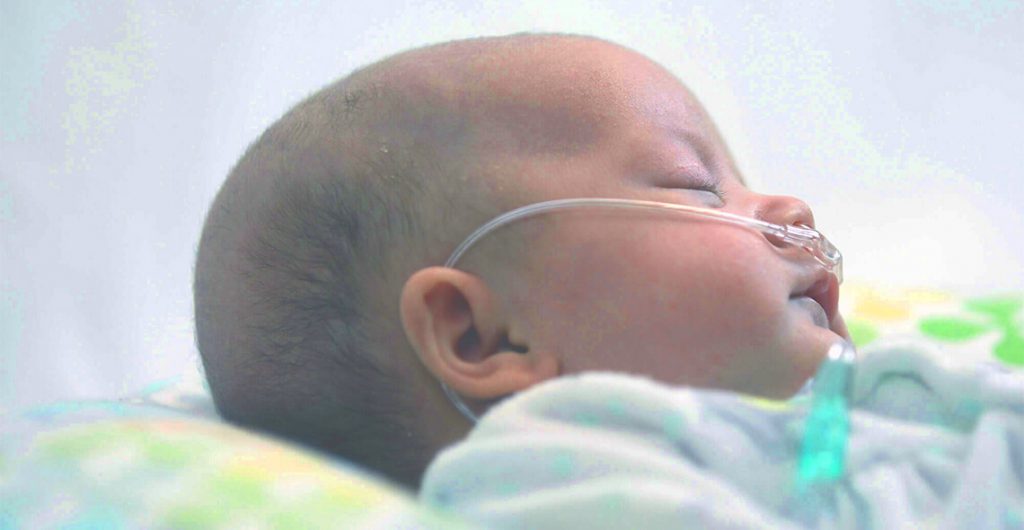Vapotherm Shows Similar Efficacy to CPAP/BiLevel in Infants with RDS

Clinicians have historically utilized nCPAP/NIPPV as primary non-invasive therapy. Several randomized controlled trials have demonstrated the efficacy of commodity high flow oxygen products and Vapotherm® Hi-VNI Technology as tools to support preterm infants after extubation.1,2
In 2014, Kugelman and colleagues published the findings of a pilot study (n=76) comparing Vapotherm to nasal intermittent positive pressure ventilation (NIPPV) as primary support for infants < 35 weeks gestational age (GA) with RDS3. The trial found no significant difference in intubation rates between the two approaches.
Recently, a group of neonatologists at the University of Milan (Milan, Italy) designed and executed a larger clinical trial (n=316) to compare Vapotherm to nCPAP/BiLevel in preventing intubations in preterm infants >28 weeks gestational age (GA). The results of the prospective randomized controlled trial were published by Lavizzari and colleagues in August 2016 in JAMA Pediatrics titled Heated, Humidified High-Flow Nasal Cannula vs Nasal Continuous Positive Airway Pressure for Respiratory Distress Syndrome of Prematurity: A Randomized Clinical Noninferiority Trial. The study was a non-inferiority design, with an a priori non-inferiority margin of 10% difference between the two therapies.
The trial found no significant difference between the therapies in the primary outcome of treatment failure requiring mechanical ventilation. The authors conclude Vapotherm Precision Flow shows efficacy which was non-inferior to nCPAP/BiLevel in preventing intubations in preterm infants between 28 and 37 weeks gestation (95% Confidence Interval of the difference in risk -6.0 to 8.6%).
Evidence from these clinical trials suggests Vapotherm Hi-VNI Technology is the only mask-free form of non-invasive ventilation for spontaneously breathing patients shown to be as clinically effective as CPAP/Bi-Level and NiPPV as a tool for primary non-invasive management of preterm infants with RDS.
References